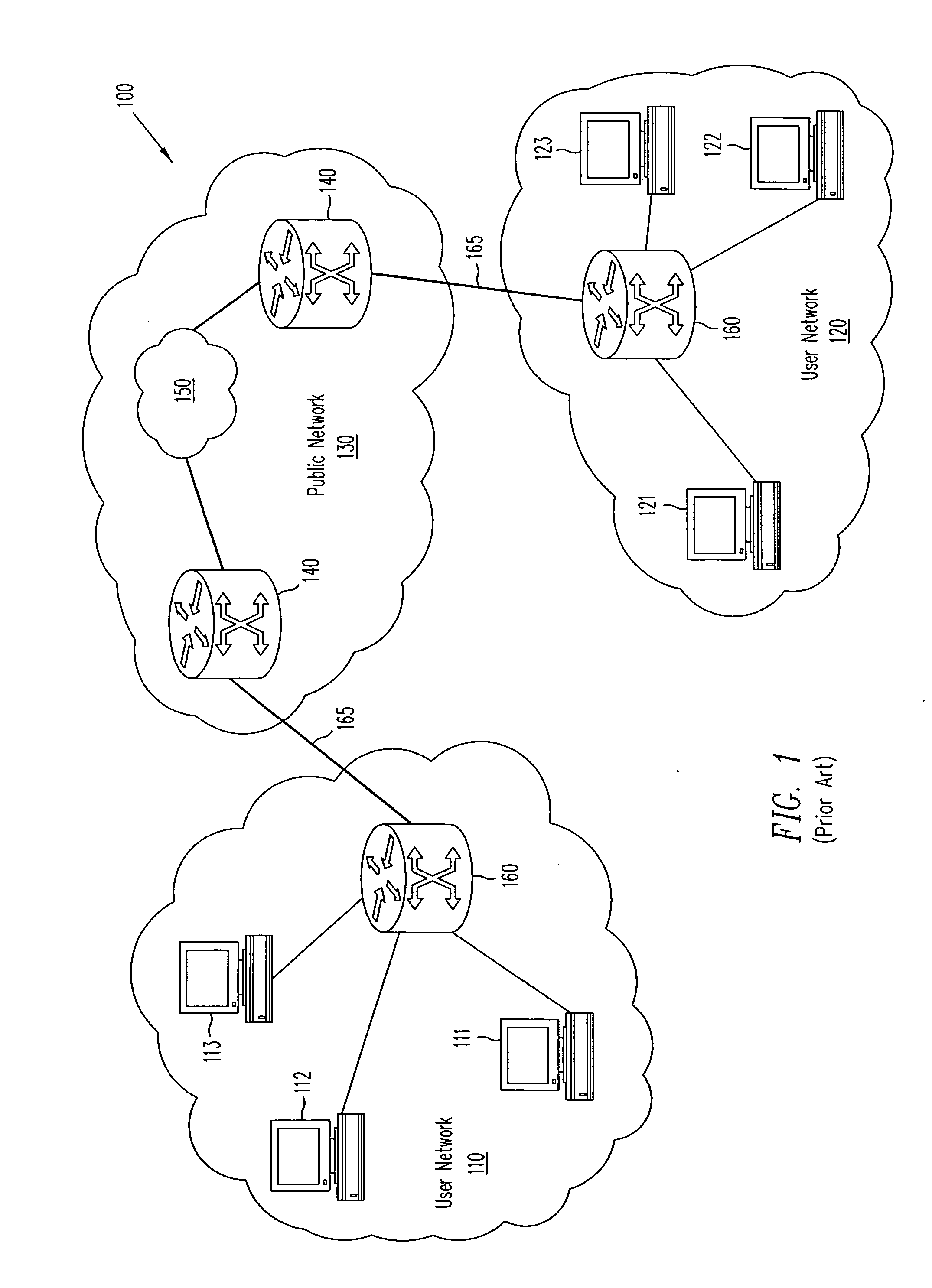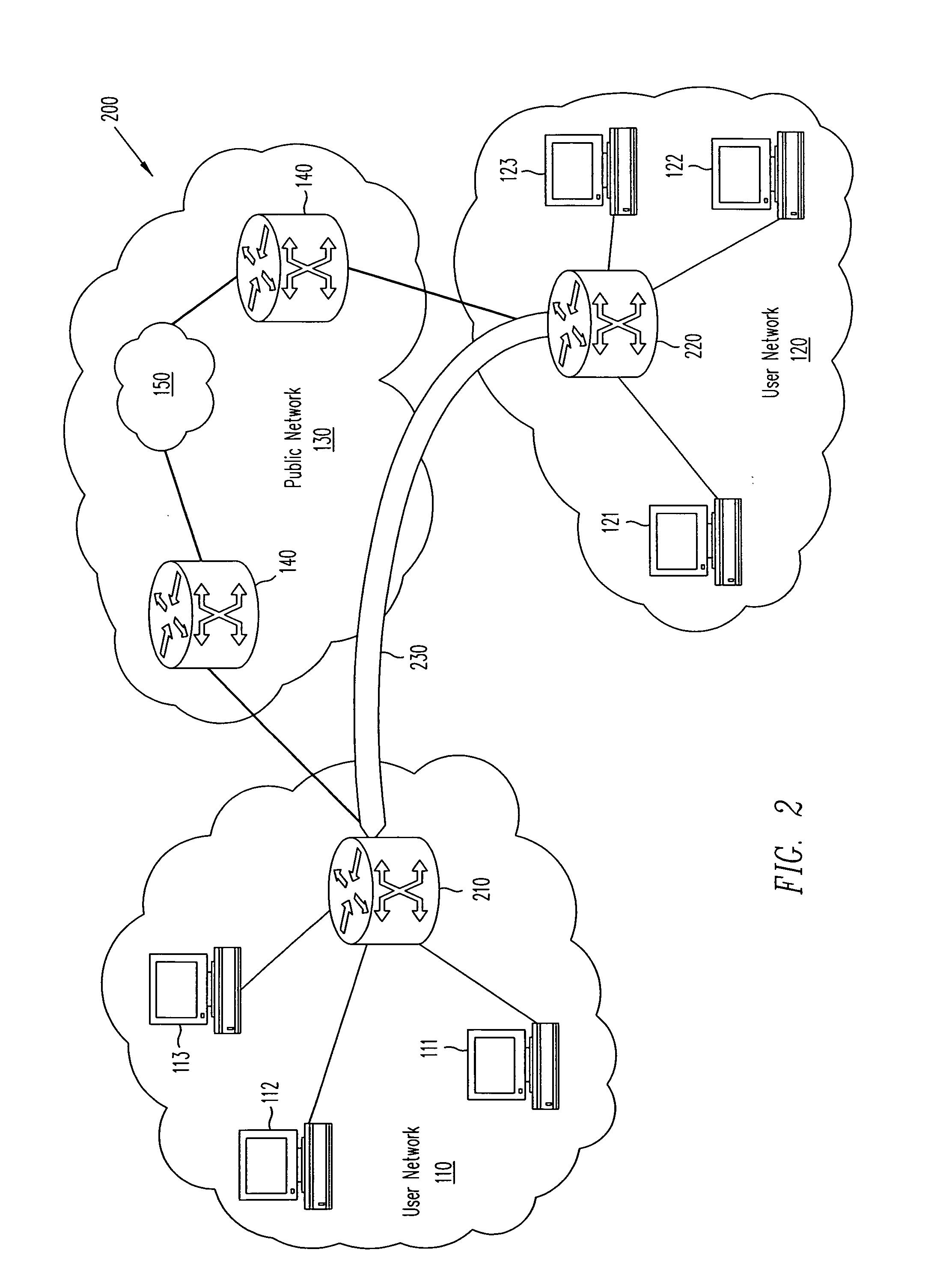Method for universal transport encapsulation for internet protocol network communications
- Summary
- Abstract
- Description
- Claims
- Application Information
AI Technical Summary
Benefits of technology
Problems solved by technology
Method used
Image
Examples
Embodiment Construction
[0017] Overview
[0018] The present invention is a method of providing a universal transport interface (UTI) protocol utilizing a packet mapping called the universal transport encapsulation (UTE). By using the UTI protocol, network administrators can create high-speed tunnels through existing IP networks capable of carrying a wide variety of payload packets. UTI can be used to encapsulate most forms of non-IP packetized legacy data traffic efficiently and with minimal complexity, thereby providing a flexible, user-transparent virtual connection for legacy users.
[0019]FIG. 1 shows a prior art data communications network 100. Users 111, 112, and 113 are connected as part of self-contained user network 110. Likewise, users 121, 122, and 123 are connected as part of another self-contained user network 120. User networks 110 and 120 are connected to each other by means of public network 130, itself composed of two or more routers 140 connected by network cloud 150.
[0020] Public network ...
PUM
 Login to View More
Login to View More Abstract
Description
Claims
Application Information
 Login to View More
Login to View More - R&D
- Intellectual Property
- Life Sciences
- Materials
- Tech Scout
- Unparalleled Data Quality
- Higher Quality Content
- 60% Fewer Hallucinations
Browse by: Latest US Patents, China's latest patents, Technical Efficacy Thesaurus, Application Domain, Technology Topic, Popular Technical Reports.
© 2025 PatSnap. All rights reserved.Legal|Privacy policy|Modern Slavery Act Transparency Statement|Sitemap|About US| Contact US: help@patsnap.com



